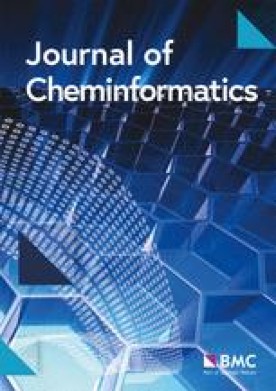Crossover operators for molecular graphs with an application to virtual drug screening
IF 5.7
2区 化学
Q1 CHEMISTRY, MULTIDISCIPLINARY
引用次数: 0
Abstract
Genetic algorithms are a powerful method to solve optimization problems with complex cost functions over vast search spaces that rely in particular on recombining parts of previous solutions. Crossover operators play a crucial role in this context. Here, we describe a large class of these operators designed for searching over spaces of graphs. These operators are based on introducing small cuts into graphs and rejoining the resulting induced subgraphs of two parents. This form of cut-and-join crossover can be restricted in a consistent way to preserve local properties such as vertex-degrees (valency), or bond-orders, as well as global properties such as graph-theoretic planarity. In contrast to crossover on strings, cut-and-join crossover on graphs is powerful enough to ergodically explore chemical space even in the absence of mutation operators. Extensive benchmarking shows that the offspring of molecular graphs are again plausible molecules with high probability, while at the same time crossover drastically increases the diversity compared to initial molecule libraries. Moreover, desirable properties such as favorable indices of synthesizability are preserved with sufficient frequency that candidate offsprings can be filtered efficiently for such properties. As an application we utilized the cut-and-join crossover in REvoLd, a GA-based system for computer-aided drug design. In optimization runs searching for ligands binding to four different target proteins we consistently found candidate molecules with binding constants exceeding the best known binders as well as candidates found in make-on-demand libraries. Scientific contribution We define cut-and-join crossover operators on a variety of graph classes including molecular graphs. This constitutes a mathematically simple and well-characterized approach to recombination of molecules that performed very well in real-life CADD tasks.分子图的交叉算子及其在虚拟药物筛选中的应用
遗传算法是一种强大的方法,可以在巨大的搜索空间中解决具有复杂代价函数的优化问题,特别是依赖于重组先前解决方案的部分。在这种情况下,跨界运营商发挥着至关重要的作用。在这里,我们描述了一类用于搜索图空间的算子。这些运算符是基于在图中引入小切割并重新连接两个父图的诱导子图。这种形式的切割连接交叉可以以一致的方式进行限制,以保留局部属性,如顶点度(价)或键序,以及全局属性,如图论平面性。与字符串上的交叉相比,图上的切割连接交叉足够强大,即使在没有突变算子的情况下也可以遍历地探索化学空间。广泛的基准测试表明,分子图的后代再次具有高概率的似是而非的分子,同时交叉大大增加了与初始分子库相比的多样性。此外,理想的性质,如有利的可合成性指标,以足够的频率保留,候选后代可以有效地过滤这些性质。作为一个应用,我们在REvoLd中使用了切割连接交叉,REvoLd是一个基于ga的计算机辅助药物设计系统。在寻找与四种不同靶蛋白结合的配体的优化运行中,我们不断地发现候选分子的结合常数超过了最知名的结合物,以及在按需制造文库中发现的候选分子。我们在包括分子图在内的各种图类上定义了切割连接交叉算子。这构成了一种数学上简单且具有良好特征的分子重组方法,在现实生活中的CADD任务中表现非常好。
本文章由计算机程序翻译,如有差异,请以英文原文为准。
求助全文
约1分钟内获得全文
求助全文
来源期刊

Journal of Cheminformatics
CHEMISTRY, MULTIDISCIPLINARY-COMPUTER SCIENCE, INFORMATION SYSTEMS
CiteScore
14.10
自引率
7.00%
发文量
82
审稿时长
3 months
期刊介绍:
Journal of Cheminformatics is an open access journal publishing original peer-reviewed research in all aspects of cheminformatics and molecular modelling.
Coverage includes, but is not limited to:
chemical information systems, software and databases, and molecular modelling,
chemical structure representations and their use in structure, substructure, and similarity searching of chemical substance and chemical reaction databases,
computer and molecular graphics, computer-aided molecular design, expert systems, QSAR, and data mining techniques.
 求助内容:
求助内容: 应助结果提醒方式:
应助结果提醒方式:


